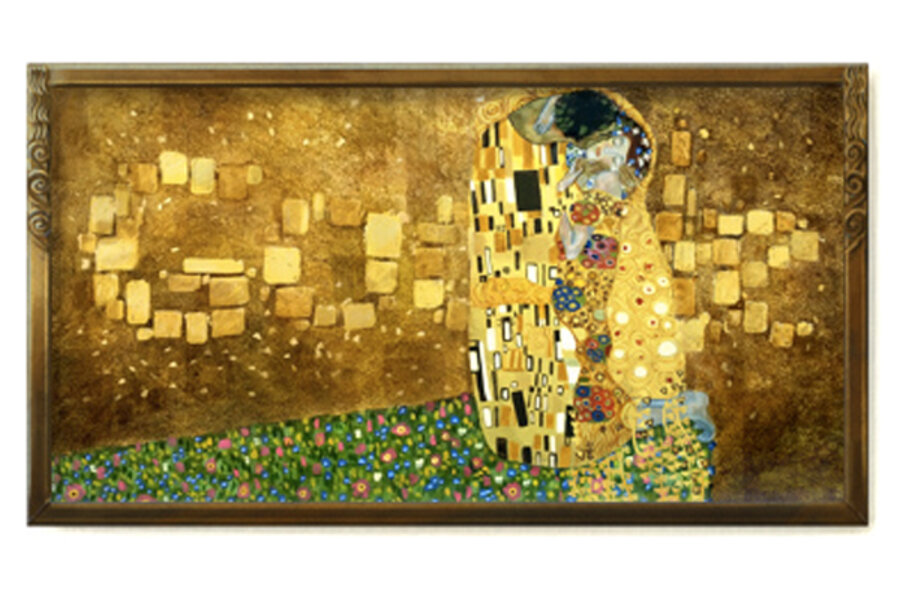Why is Google honoring Gustav Klimt with a golden doodle?
Loading...
Google adorned its homepage today with a Doodle commemorating the 150th birthday of Austrian painter Gustav Klimt, known for his elaborate and beautiful Art Nouveau paintings, his rejection of the prevailing conservative art styles of the day, and his sometimes controversial, frank depictions of eroticism.
Most of Klimt's best-known work, and the inspiration for today's Doodle, come from his so-called "Golden Phase," a period marked by Klimt's extensive use of gold-leaf, and his greatest career successes. Google has incorporated into its logo a detail of The Kiss (1907-1908), a gilded square painting that depicts a couple embracing, entwined in decorative yellow robes, inspired by the 19th century's Arts and Crafts movement, as well as the newer Art Nouveau style.
In 1897, Klimt resigned from the Association of Austrian Artists along with several other painters, sculptors, and architects, forming the Wiener Sezession (Vienna Secession), a movement crystalized not around one style, but rather around a rejection of the traditional Historicism of the Association. He also served as the organization's president. Members strove to create new styles independent of historical tradition. Many members produced highly decorative works, and the group's exhibitions helped to familiarize Austria with innovative new works, including the paintings of the French Impressionists.
Most of Klimt's paintings depict figures, usually women. He never painted a self portrait, writing:
"I am less interested in myself as a subject for a painting than I am in other people, above all women...There is nothing special about me. I am a painter who paints day after day from morning to night...Who ever wants to know something about me... ought to look carefully at my pictures."
Not all of Klimt's work was appreciated in his lifetime, though. Frank depictions of sexuality alienated some viewers. At the turn of the century, murals commissioned by the University of Vienna were called pornographic, prompting a public outcry. The murals were never displayed, and were later destroyed by retreating Nazis. Klimt seemed unperturbed by the controversy, however. 1899's Nuda Verita contains an inscription reading, "If you cannot please everyone with your deeds and your art, please a few. To please many is bad." Later work would prove even more controversial, particularly the posthumous Fünfundzwanzig Handzeichnungen (Twenty-five Drawings), which contained a large amount of erotic material.
Klimt's legacy and influence are debated by art historians, though he remains a very popular artist. One work, Adele Bloch-Bauer I, sold for a record $135 million in 2006, at the time the highest price ever paid for a painting. His work will be shown throughout Vienna this year to celebrate his 150th birthday, and he has been celebrated on two euro coins, once in 2003 and again in 2012. His best-known work may be a century old, but time has not diminished its power or beauty. It still has the power to inspire today.
For more on how technology intersects daily life, follow us on Twitter @venturenaut.






